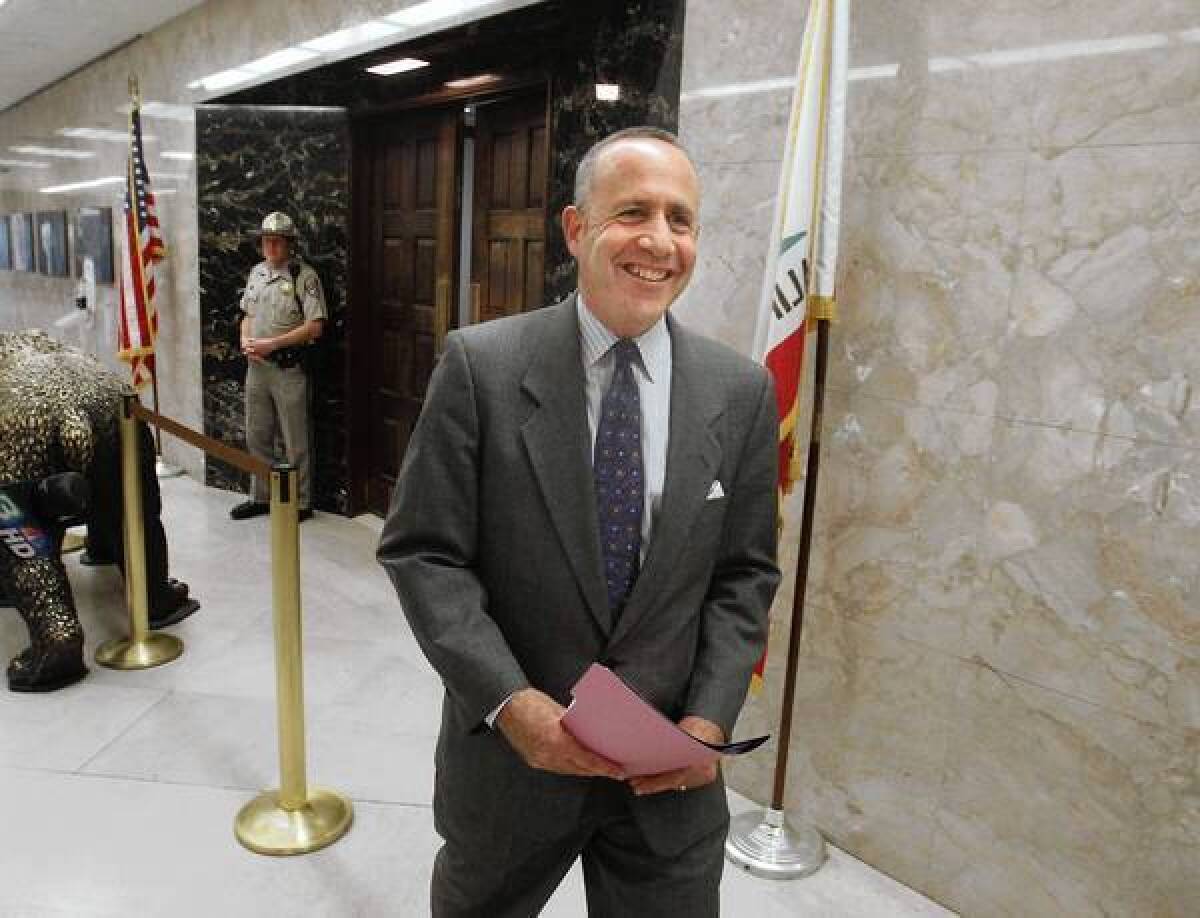California budget accord balances restraint, social services

- Share via
SACRAMENTO — The budget deal that lawmakers will vote on this week is an effort to mesh financial restraint with a desire to provide more social services and healthcare for the needy — giving the state’s economy extra time to recover before some of the spending kicks in.
The $96.3-billion deal, formally announced Tuesday by Gov. Jerry Brown and top legislators, sets the stage for hundreds of millions of dollars in new spending on welfare grants, tuition aid for university students and dental care for poor adults in future years.
But the lawmakers agreed to hedge their bets on the recovering economy by paring back some proposals and holding off on some expenditures until next spring or summer.
That way Brown, who was concerned about opening the spending spigot, can say he made good on his promise of fiscal prudence and Democratic legislators can highlight plans to restore spending — albeit delayed — as a success in their quest to rebuild the state’s social safety net after years of deep cuts.
“We are in a slower recovery than has historically been the case,” Brown said at a Capitol news conference. “We’re tempering the spending to the flow of the new funding.”
But Republicans said the budget would put the state on course for unsustainable spending increases.
“It’s the mullet budget,” said Assemblyman Jeff Gorell (R-Camarillo). “It’s conservative up front, but it’s liberal in the back.”
In addition to restoring some social welfare services, the spending blueprint includes plans for revamping education funding and healthcare.
Some money will be shifted from wealthier schools to districts with high numbers of poor students and English learners. And state officials are preparing an expansion of California’s public healthcare program as part of the federal overhaul initiated by President Obama.
There’s also money for energy-efficiency projects at schools and community colleges, paid for by a change in the corporate tax code approved by voters in November.
The budget holds $1.1 billion in reserve, but no money is allocated for the state’s rainy-day fund. H.D. Palmer, a spokesman for Brown’s Department of Finance, said officials are still calculating any surplus that might be expected.
The budget must be approved by the full Legislature by Saturday and signed into law by the governor before it can take effect July 1. Lawmakers are on track to meet their June 15 deadline for the third year in a row.
Jerry Nickelsburg, senior economist at the UCLA Anderson School of Management, cautioned that California’s finances are notoriously hard to predict, and changes in the stock market or personal income could force state leaders to recalibrate their plans.
Even though revenue has exceeded expectations in recent months, “expansions don’t go on forever,” Nickelsburg said. “The state’s revenue is very volatile, and at some point it’s going to turn down.”
Brown held firm on his revenue estimate, which is more conservative by billions of dollars than the one from the Legislature’s nonpartisan budget analyst. But to find room for the new spending that lawmakers wanted, he accepted more optimistic estimates for property-tax receipts, freeing up about $300 million.
The governor also lowered his estimate for the cost of implementing the federal healthcare overhaul, providing an additional $80 million.
In addition, Brown reduced his plans to repay money owed to schools from previous years by roughly $650 million, delaying his effort to chip away at what he calls the state’s “wall of debt.”
All of the shifts allowed lawmakers to include more money for career training, new school curriculum standards and other programs.
Some of the new spending, such as $140 million for mental health, won’t be permanent. But other increases will be and are primed to continue climbing in future years.
For example, higher spending on the state’s welfare program would start at $50 million in the new budget and triple the following year. It could eventually rise to $1 billion annually under a framework included in the new budget.
Assembly Speaker John A. Pérez (D-Los Angeles), who pushed for the welfare increases, said the budget deal “reflects the values and priorities of Californians.”
He added, “We’re back in the position of making long-term plans for our state.”
Also announced Tuesday was a tentative agreement between Brown and California’s largest state worker union to grant raises to its members. That deal would increase pay for roughly 95,000 workers by 4.5% by July 2015.
Negotiations are still underway with unions representing tens of thousands of other state workers.
More to Read
Sign up for Essential California
The most important California stories and recommendations in your inbox every morning.
You may occasionally receive promotional content from the Los Angeles Times.











